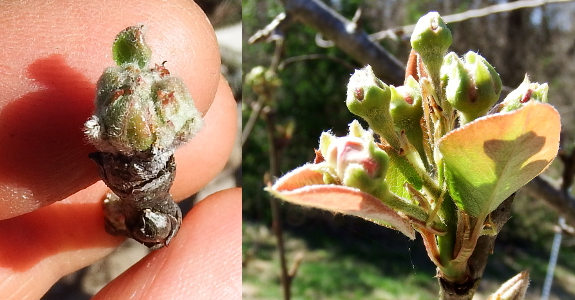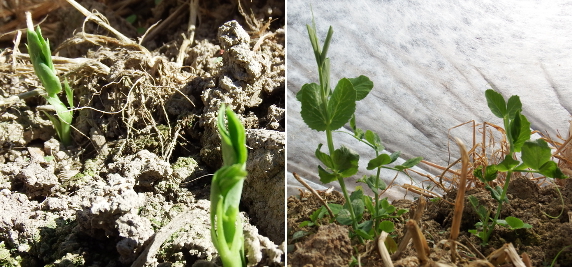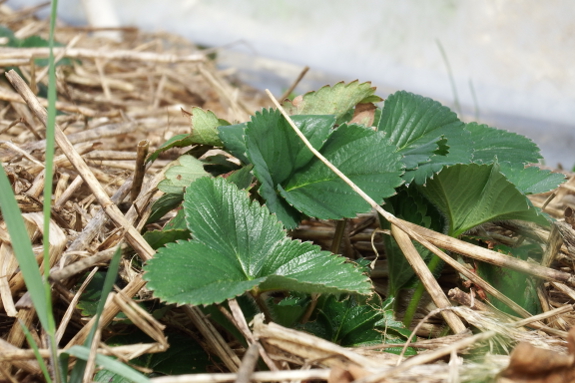
Slowing down fruit-tree flowers

Although hard freezes
once the garden year starts are always a little dicey, I'm actually glad
a cool spell came along to slow spring down. 21 degrees now while apples vary from silver tip to green tip and pears from green tip to tight cluster
means a small thinning effect on our hypothetical fruit crop. 21
degrees when flowers are fully open would mean yet another year with no
fruit.

The vegetable garden is
similarly unfazed by the return of winter. Baby peas from my second
planting are just barely poking out of the ground, and I actually didn't
even cover them before the predicted cold spell. I was counting on the
fact that the young plants were very close to the earth, which had been
warmed well by weeks of summery sun. Sure enough, both the uncovered
baby peas and the larger transplanted peas under cover came through the
cold snap with flying colors.

In one part of the
garden, though, I'm speeding things up rather than letting the cold slow
things down. About a month ago, I erected quick hoops atop one row of
strawberries. And, at long last, new growth is finally starting to pop
up underneath. In contrast, uncovered plants nearby are still largely
dormant.
Of course, I could do a
lot more if I wanted ultra-early strawberries. A farm down the road
keeps their plants under row-cover fabric all winter and uses black
plastic mulch to keep down weeds and heat the soil around their roots.
As a result, their fields are already blooming...and in great danger
from hard freezes like this. A combination of sprinklers and row cover
fabric will probably keep their crop safe. Still, I prefer to walk the
middle road and speed my strawberries up a bit...but not too much.
Want more in-depth information? Browse through our books.
Or explore more posts by date or by subject.
About us: Anna Hess and Mark Hamilton spent over a decade living self-sufficiently in the mountains of Virginia before moving north to start over from scratch in the foothills of Ohio. They've experimented with permaculture, no-till gardening, trailersteading, home-based microbusinesses and much more, writing about their adventures in both blogs and books.
Want to be notified when new comments are posted on this page? Click on the RSS button after you add a comment to subscribe to the comment feed, or simply check the box beside "email replies to me" while writing your comment.

Considerations like this really make you appreciate the problems pioneers had when there was no PigglyWiggly to back them up in a bad crop year.
This has been an unusual winter for weather because we have an unusually strong El Nino situation in the Pacific. The USDA recently changed their growing zone map. My WI property moved from 4 to 5 and I didn't have to lift a finger! The weather there, however, hasn't noticeably changed in reality. I wonder how many gardens will fail if people plan by the new map?
Don't worry about dewormers vis-a-vis soil health. They inhibit a membrane transport protein in invertebrate muscle & nerve tissue, not present in vertebrates nor bacteria/fungi. The little bit scattered about in the goat droppings would have minimal effect on invertebrate populations in the soil. Being organic,the molecules would probably serve as food for bacteria, metabolized away by them.
Please don't go TreeHugger on us, Anna. Your scientific approach to loving the environment has been so refreshing!